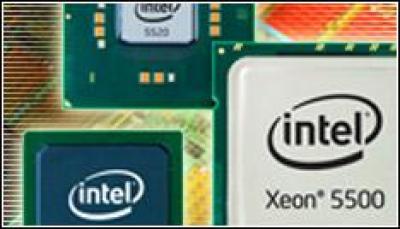Intel, AMD Grow While Nvidia Weakens

Intel kept hold of the top spot in the graphics chips market, while AMD show significant gains
Intel kept the top spot in the list of the world’s biggest PC graphics chips vendor, and Advanced Micro Devices saw huge gains through its ATI business, according to a report by Jon Peddie Research.
All that came at the expense of Nvidia, which saw its business tail off in practically every segment, according to the report released on 30 July.
The report came two days after Nvidia officials issued a warning about weak second-quarter earnings, which reportedly added fuel to worries of a consumer slowdown in PC purchases in the second half of the year, thanks for ongoing economic worries and the shaky financial news coming out of Europe.
Consumer PC Purchases
Jon Peddie Research reported that in the second quarter, overall graphics shipments grew 4.3 percent over the previous quarter, but were about the same as the same three months last year. For the first half of 2010, shipments were up 38.6 percent.
The rapid growth in the laptop market was seen in the desktop discrete GPU space, which saw a 21.4 percent drop from the first quarter.
Intel saw its market share grow to 54.9 percent, up from 49.7 percent in the first quarter, and unit shipments grow 15.3 percent, according to Jon Peddie Research’s numbers. Intel was helped by the release of its Clarkdale processors in January and continued sales of Atom processor for netbooks. Strong notebook sales also buoyed Intel’s position.
AMD saw shipments jump 32.6 percent over the same period last year, and 19.1 percent over the first period, giving the vendor a 24.4 percent market share.
AMD had the largest gains in both discrete and integrated desktop graphics products.
AMD has aggressively pursued the graphics space since buying ATI in 2006 for $5.4 billion (£3.4bn). In announcing second-quarter financial results, AMD officials said graphics revenue grew 8 percent over the first quarter, and 87 percent over the same period last year, driven by record GPU shipments. Also in the second quarter, AMD demonstrated its first Fusion APUs (Accelerated Processing Units), “Ontario” and “Llano,” at Computex. The Fusion APUs bring computing and graphics capabilities onto a single piece of silicon.
AMD is expected to release the 40-nm Ontario in the fourth quarter, with systems powered by the APU to come out in early 2011. Llano will come out in 2011.
In the second quarter, it was Nvidia that struggled the most. The GPU maker saw double-digit losses across every segment except for notebooks, where the company grew shipments 10 percent over the first quarter.
Notebooks Growing
Nvidia officials announced July 28 that they expect revenues in their fiscal second quarter, which ends on 31 July, to come in at $800 million to $820 million, down from an earlier projection of $950 million to $970 million.
Nvidia is scheduled to announce second-quarter earnings on 12 Aug.
In announcing the downgraded projections, Nvidia officials said the company was hurt by a “greater-than-expected shift” away from discrete GPUs to lower-priced GPUs and PCs with integrated graphics. That shift occurred after memory costs increased and the European and Chinese markets showed economic weakness, according to the market research firm.